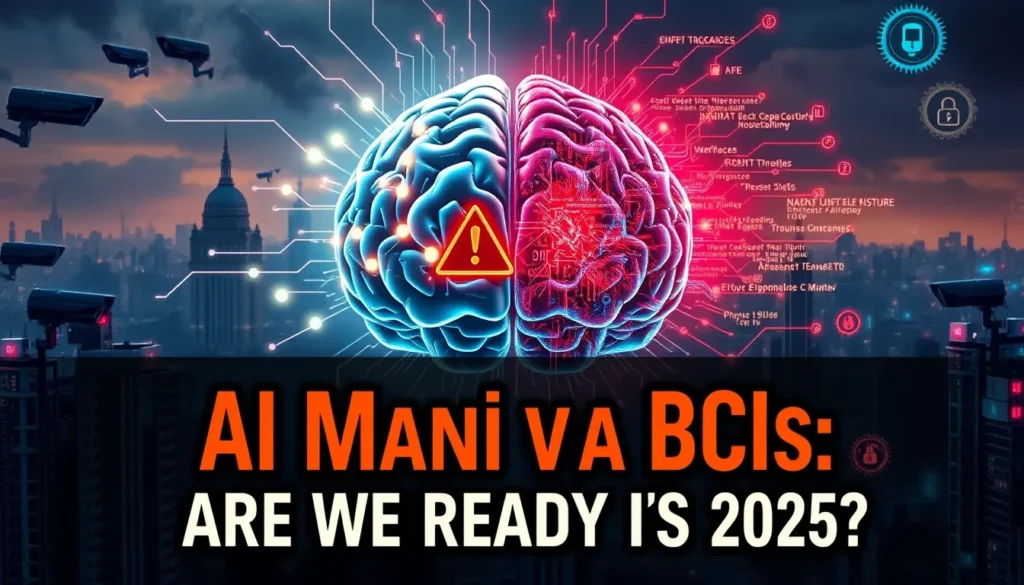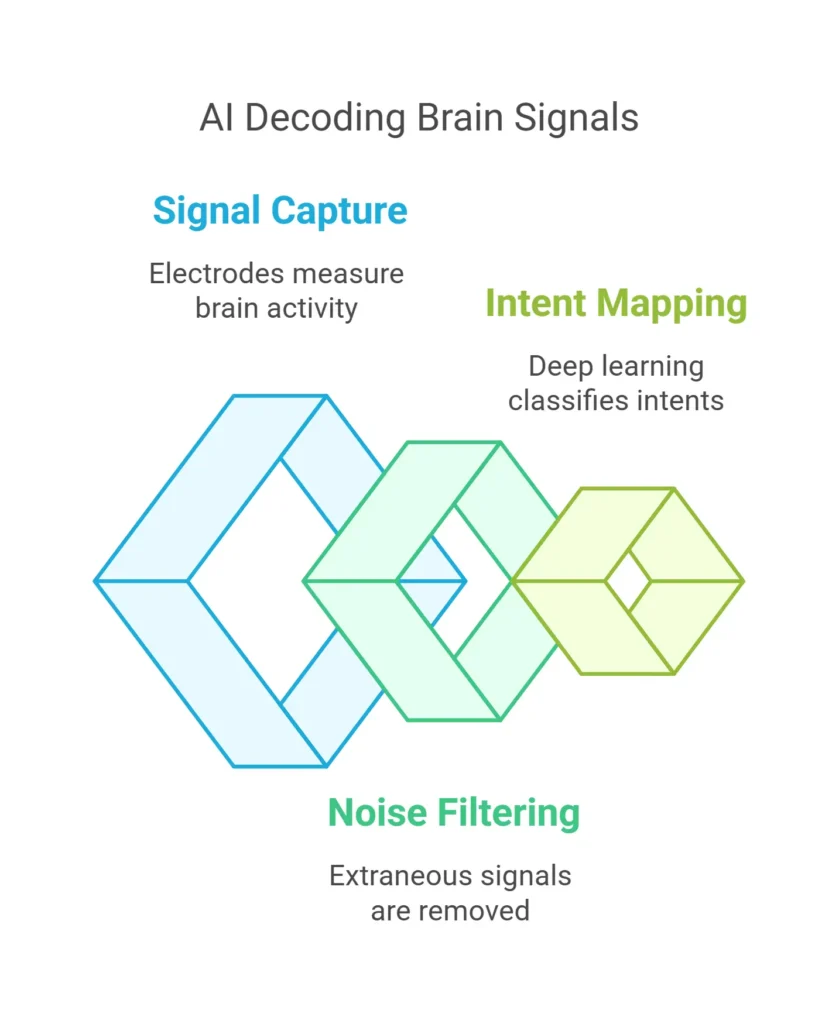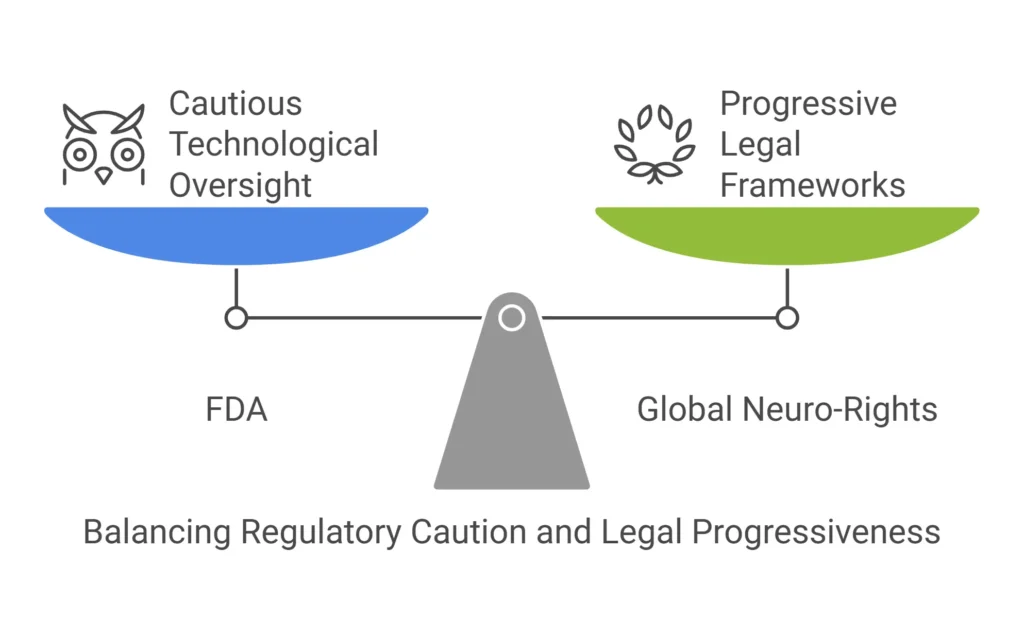If AI begins to utilize neural data collected by an AI to drive behavior, it might become impossible to disentangle which influences originated from the raw neural data and which originated from the model, i.e., as to which of the potential evoked neural responses these actually evoked BCI belonged(i.e., the BCI themselves, the choices and suggestions of the model, random BCI from unexamined neural activities, and necromancy1).

In this deep dive, we’ll surface the newest advances, underground weaknesses, and ethical potholes in the BCI world. We’ll get to why your brainwaves might be the next battleground in the privacy wars and how to fight back against the neuro-revolution.
The Brain Tech Gold Rush: Who’s Leading the Charge?
Neuralink’s Roller Coaster Journey
In January 2024, Elon Musk’s Neuralink grabbed international headlines after implanting its first device in Noland Arbaugh, a 29 year old who is paralyzed waist down. The results were astonishing at first glance. Arbaugh was able to play chess and control music playlists using his mind. However, the celebratory mood was short-lived as 85% of the ultra-thin threads that were implanted detached within a few weeks due to unanticipated movement of the brain.(Neuralink’s FDA trial report).

By August 2024, Neuralink’s second patient (“Alex”) had received a new implant that was positioned closer to the brain. This version permitted Alex to model in 3D using Fusion 360 and excel in first-person shooter games – an example of how quickly things can evolve. Nevertheless, critics say these fixes are just Band-Aids for bigger problems such as biocompatibility over time and data privacy. (Neuralink’s Wikipedia page).
The Silent Contender: Synchron’s Stentrode
Despite all the hype, the Australian technology company Synchron is quietly taming that negative vibe to the rest of the world. Their Stentrode device, a transcatheter implantable stent-like device, introduced through the vascular access obtained by invasive brain surgery. 2021, Synchron has first FDA approval to human clinical study for human consumption (Synchron’s clinical milestones).
Six participants of the COMMAND trial are example cases of text mentalizers, Web shopping on the commercial internet (i.e., shopping by visiting websites), and home automation/smart home control aided by smart devices. Unlike Neuralink, Synchron is, itself, intrinsically in line with mainstream technology (eg, Apple Vision Pro, ChatGPT), which explains its possible consumer features on the short term.
Non-Invasive BCIs: Carnegie Mellon’s Game Changer
For those who still nurse a grudge against brain surgery, there is hope at Carnegie Mellon University. Their (AI based) EEG paradigm is able to achieve 90% accuracy in the real-time continuous hand movement-a novel state-of-the art in non-invasive tech. Participants of the 2024 study (that is, highly cognitively limited) engaged in moving a 2D object traction using a skull cap (the first commercial demonstration of the research at CMU).
Key Trade-Offs:
| Factor | Invasive BCIs (Neuralink) | Non-Invasive BCIs (CMU) |
| Signal Precision | Single-neuron resolution | Grouped neural signals |
| Surgical Risk | High (brain hemorrhage) | None |
| Maintenance | Battery replacements | Daily recalibration |
| Best For | Paralysis treatment | Mass-market adoption |
This table isn’t just about specs—it’s about choosing between medical necessity and everyday convenience.
How AI Decodes (and Manipulates) Your Thoughts
The “Mind-Reading” Pipeline
Present BCI are machine learning driven, i.e., using AI algorithms to map raw brain signals toward movements. Here’s how it works:

- Signal Capture: Electrodes measure, in-invasive (i.e., spikes/posts) or non-invasive (i.e., caps) scalp dynamics
- Filter noise (native AI implementation): Muscles and extraneous “thought” (or muscle) activity are removed.
- Intent Mapping: Deep learning classifiers are trained on patterns of intents (e.g., cursor move left).
At Carnegie Mellon, the group’s convolutional neural networks idea paved the way to unpreceded movement decoding (CMU’s AI methodology). That is, however, the more data is cleaned up, the greater the odds are that the manipulated data is an outcome (data artifact)
My AI Voice Clone Experiment
I recently took a trial of Deepseek’s voice replication tool model program and used it to build a model of my writing style of speech. It produced chunks of text from articles uploaded onto the system, which seemed to closely and similarly conform to my style of sarcasm. AI became my sarcasm unperceivable (Deepseek’s official website)..
This mirrors BCI risks: AI trained on neural data could “edit” your intentions. That is, instead of counting the correction of “Hello, you seem tired” as incorrect, it is counted as correct because the model is looking at a potentially anticipated correction, as written, and thus, it sees “Hello,you seem tired” as the final corrected data set, whereas a data set limited to an alphabet would see the correction to be a simple application of the alphabet rules for that data set.
Hacking the Human Brain: Not Sci-Fi Anymore
Adversarial Attacks: The Invisible Threat
In this article, a 2023 National Science Open study group, as reported in this issue, has shown the narrowness of BCIs. Researchers inserted undetectable noise into EEG signals, causing:
- Prosthetic hands to crush objects
- Cursors to veer offscreen
- Emotional state misclassifications (Full research paper)
Neural Data: The Ultimate Privacy Breach
Neural data suggests latent implicit bias and in fact trauma—the “unmasked self” (Council of Europe report). Enabling insurers with the power to refuse coverage to a person solely on a pattern in neural activity, without evidence, is a highly risky proposition.
The Regulatory Race Against Time
FDA’s Tightrope Walk
FDA’s Move Into Modern Technology Regulation Neuralink faced issues from the FDA because of the concerns about the lithium battery risks and the potential of wire migration. Their approval came at an expense but was still a win for their cautious approach. Nevertheless, with Synchron targeting 2025, the regulators have to reduce their scrutiny if they want to satisfy Synchron (FDA’s BCI guidance).
Global Neuro-Rights Patchwork

- California: will enact a law prohibiting the discrimination of neural data in May 2024 which will make it the state with the most advanced neuro rights law in America (SB-938).
- EU: The Ai Act makes blanket statements about BCIs without any actionable enforcement (EU AI Act summary)
- Chile: The world’s first country to acknowledge cognitive liberty constitutionally in 2021
This approach gives rise to “neuro-tourism”, the phenomenon of businesses setting up in countries with weaker laws.
Healing vs. Hacking: The 2025 Crossroads
The Possibilities of Medicine
For patients like Noland Arbaugh, BCIs provide some semblance of personal dignity:
- Texting loved ones
- Enjoying entertainment unaided
- Potential future uses like seizure prediction
In what is known as the Enhancement Epidemic, Synchron and its CEO Tom Oxley have spoken about using BCIs to help therapy millions with ALS and other spinal injuries (Synchron’s patient impact).
The Enhancement Epidemic
Healthy users are the real prize. Early adopters might gain:
- Knowledge uploads giving 10x faster learning
- Instantaneous speech in their hearing
- Memory with no boundaries
But as UNESCO’s neuroethics panel reminds: “the consequences are yet to be audited” could cause a division of humanity into castes. (UNESCO’s neurotech ethics).
How to Protect Your Mind in 2025
- Audit Neural Data Permissions
BCI applications similarly “mute” background mind sharing functionality as would social media. - Demand Open-Source Algorithms
This type of project, for example, OpenBCI , where one is able to look through people’s source code to detect hidden backdoors is a big issue - Join the Neuro-Rights Movement
Brain rights (NeuroRights projects) are being spearheaded around the world by groups, for example, the NeuroRights Foundation.
Final Thought: Your Brain Isn’t an App
BCIs could redefine human potential—or become the ultimate surveillance tool. As 2025 approaches, remember: Your thoughts are the last frontier of privacy. Question every “innovation,” and never let convenience override autonomy.
Want to go deeper?
- Explore the Full Neurotech Threat Analysis by RAND Corporation (RAND report)
- Watch Neuralink’s First Patient Interview on YouTube (Noland Arbaugh’s story)
I really like your writing style, fantastic information, thankyou for putting up : D.
Howdy very nice site!! Guy .. Beautiful .. Superb .. I’ll bookmark your web site and take the feeds also…I am satisfied to find a lot of helpful information right here in the submit, we need work out more strategies on this regard, thanks for sharing.